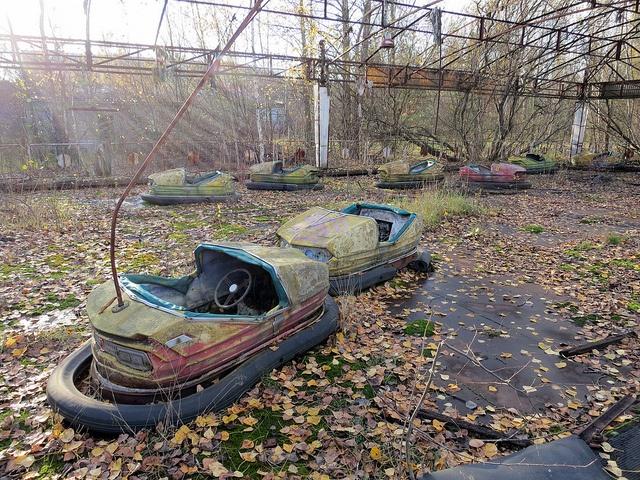
Believe it or not, the sun still shines on Chernobyl. Thirty years after one of the worst nuclear disasters in history, the Ukrainian government aims to harness the sun for solar energy to make the once-flourishing but now-unlivable area useful again.
With no humans able to inhabit the desolate land loaded with dangerous radiation, a solar farm is the perfect way to make use of an otherwise useless block of 1,600 square miles. The energy it would create, 4 gigawatts, would unmistakably make Chernobyl the largest solar power plant in the world, the Independent, a U.K. newspaper, reported on Monday.
It is still unclear whether the installation process would be possible given the remaining radiation. But the infrastructure essential for transporting large amounts of energy still exists, as the transmission lines that once served the Chernobyl plant's four main reactors remain in place.
The Ukrainian government is in search of investors willing to develop the new solar plant. Ukraine’s environment minister, Ostap Semerak, said several investment and energy companies — two American firms and four Canadian companies —have expressed interest in the potential project, Bloomberg reported.
The production of such massive amounts of solar energy could be yet another huge step for Ukraine as it continues to seek independence from Russian energy supplies. From 2014 to 2015, Ukraine cut its imports of natural gas from Russia in half, leaning more on Europe to supply the country with its energy.
The government’s implementation of a 1-gigawatt solar target is estimated to cost around $1.1 billion, and Ukrainian developers are planning to experiment by installing 4 megawatts of solar by the end of the year, Bloomberg reported.
Chernobyl is one of two sites — along with the 2011 Fukushima Daiichi nuclear disaster zone — to ever reach the highest level on the International Nuclear Event Scale. Thirty-one people were killed as a direct result of the incident, but a World Health Organization spokesman said the disaster can be related to thousands of cancer cases. The New York Times cited more than 300,000 displacements because of the incident, and the Independent reported that death estimates as a result of the disaster has reached 100,000.
Maybe this will give Chernobyl a chance to rewrite its name, which has long been synonymous with catastrophe.
Photo by Stefan Krasowski/Flickr
Based in Atlanta, GA, Grant is a nonprofit professional and freelance writer passionate about affordable housing and finding sustainable approaches to international development. A proud graduate of the University of Maryland, Grant spent four months post-grad living in Armenia where he worked for Habitat for Humanity and the World Food Programme. He enjoys playing trivia with friends but is still seeking his first victory - he ceaselessly blames his friends lack of preparation.














